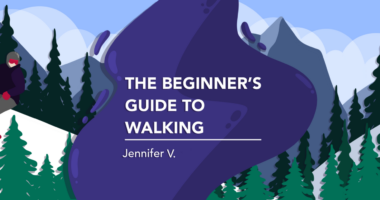The History of NMO and Pregnancy From One Patient’s Perspective

This week, my sweet girl, Sophie, has turned the big 10. I’m feeling all verklempt because they told me she couldn’t exist. But doctors are wrong sometimes, and I’m glad I trusted my gut.
Twelve years ago, little information was available about neuromyelitis optica (NMO), and even less about pregnancy and the disorder. I get why they told my husband Mike and me that it couldn’t happen for us. I was fresh from a major transverse myelitis attack that left me with permanent numbness in my legs. I lost the vision in my left eye for three months. And I was on a cocktail of medication that wasn’t safe for an unborn child.
Yet, somehow, I knew she’d exist. Mike knew it, too. It’s hard to explain, but sometimes, despite all of the odds, you just know something to be true — like walking again when I was told it wouldn’t happen or seeing again out of my left eye.
I’m not the type to believe in hocus-pocus and fortunetellers, but at a ladies’ night dinner, I found myself seated in front of one. I’ll spare you the details, but everything she saw has happened, including my battle with NMO and our daughter.
I’m a big believer in modern medicine. Frankly, it’s what has kept me alive and going strong. However, as we celebrate this milestone of double digits with our daughter, I’m overwhelmed with gratitude that she’s in our lives. I’m so glad I trusted myself and my body all those years ago.
This isn’t a Hollywood love story
The story is supposed to be boy meets girl and they fall madly in love, get married, buy a home, have children, and live happily ever after. Unfortunately, our story was more of a science experiment. When you live with NMO, doctors aren’t too excited about all the risks we’re up against.
First, I needed to convince my neurologist that pregnancy was a risk worth taking. He wasn’t pleased with the idea, but I came prepared with research from a recent medical conference. Then I needed to be weaned off the unsafe drugs in my system.
As soon as we hit the six-week mark, we started in vitro fertilization (IVF), complete with hormone injections and daily visits to a fertility clinic. Every morning, a new nurse would ask me to put my feet into the stirrups and I’d awkwardly wait for my specialist. It feels petty now, but I remember being angry at NMO, as if my disorder were a person and not my own body failing itself.
Mike and I also had to have a difficult discussion. If my NMO flared during the pregnancy and my life was in danger, what would we do?
There was nothing romantic about how we brought our child into the world.
By the time we had worked with several doctors, specialists, and therapists, our pregnancy felt like it was a public spectacle. It’s why we never shared the gender of our baby, because it was the only thing left for us to share together.
We got lucky in more ways than one
In a webinar I participated in last year, a leading NMO neurologist shared how we now know that a pregnancy can trigger an attack. That’s vastly different from what we were told 12 years ago, which was that a pregnancy interrupts NMO and can sometimes reset the body.
I recall meeting two women at a medical conference right before we tried to have Sophie. Both had troubling experiences more aligned with the information available now. I should’ve learned more from those women, but I didn’t. There’s a big part of me that’s still in denial that I have NMO, even after all this time. Back then, I was even more distant from the truth.
Reflecting on my parenting journey, I recognize how fortunate I am. Not only did I avoid a major attack during my pregnancy, but also our first go at IVF gave us Sophie.
The first in Canada
Over the last 10 years, I’ve tried to speak to other patients, and so far, I haven’t found another NMO patient in Canada who had a successful pregnancy. My team of doctors are convinced that I was the first patient in Canada who was diagnosed and actively treated for NMO and then gave birth. This still makes me incredibly sad, especially as I celebrate Sophie’s birthday and all that she has brought to our lives. I hope more patients are as fortunate as I am.
Maybe people might find me selfish for having a child while I have a disability, but NMO has yet to slow me down. In fact, I’m convinced Sophie has kept me distracted and motivated to stay healthy.
Note: Neuromyelitis News is strictly a news and information website about the disease. It does not provide medical advice, diagnosis, or treatment. This content is not intended to be a substitute for professional medical advice, diagnosis, or treatment. Always seek the advice of your physician or other qualified health providers with any questions you may have regarding a medical condition. Never disregard professional medical advice or delay in seeking it because of something you have read on this website. The opinions expressed in this column are not those of Neuromyelitis News or its parent company, Bionews, and are intended to spark discussion about issues pertaining to neuromyelitis optica spectrum disorder (NMOSD).








Leave a comment
Fill in the required fields to post. Your email address will not be published.